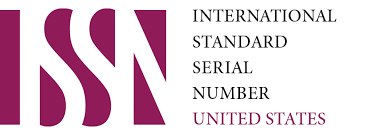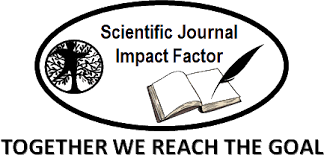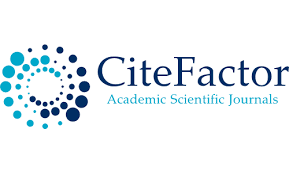Parallel montage and rhythm structure in the TV series Analytical study in contemporary works
Keywords:
parallel, montage, rhythm, seriesAbstract
Montage has grown remarkably with the evolution of cinema and the productive machinery. It has achieved a steady turn in the construction of cinematic and television work and the role of parallel montage in creating a distinctive and exciting film structure that motivates the two researchers to focus on the film rhythm or rhythm in dramatic work, specifically in the contemporary television series, which we see is often in a new kind of TV drama with intensity. The montage and its significant role in dramatic construction have formed an advanced level for filmmakers and television series in terms of creating distinctive and exciting works, Since the rhythm contributes a variety of relationships between elements of the cinematographic medium via image or sound "There was a keen desire to build it with a renewed perspective, whether by designing the view to build rhythm or montage or through the montage that broke into every part of the work or through any other process in the medium, The two researchers see that the film in general creates the rhythm with a lot of elements of the film's language. such as lighting, scenery, actor, music, photography or sequence of events via scriptwriting, as well as the view that montage often decides the entire work in montage rooms, and with high-tech renewable shows that the "Parallel Montage" parallel montage "Action Parallel" He is engaged in creating tension and suspense in the recipient by building exciting and dazzling scenes, hence the researchers have built their scientific hypothesis according to the following title: - Parallel synthesis and rhythm structure in the television series - analytical study in contemporary works. The research may be of four chapters. The first was the methodological and second framework of the theoretical framework. The third was for research procedures. The quarter included analysis, findings, conclusions, recommendations and proposals, and then a summary in English .
References
Storate Krivesh, Theatre Industry, Translation by Abdullah Mu 'tasim al-Dabbagh, Maamun
Translation and Publishing House, Baghdad, 1986
Samir Sarhan, Arab Theatre and Heritage, Baghdad: Public Cultural Affairs House, 1989
Abdul Rahman Jalabi Samir, Dictionary of Expressive Terminology (Baghdad: Al-Ma 'amun
Publishing House, 1993), pp. 227.
Abdelaziz, photo philosophy, Morocco, Africa East, 2014
Abdul Malik Muryadh, in Novel Theory, Research in Narrative Techniques, Knowledge World, No.
, Kuwait, 1998, p. 172
Abdelbaset Salman, Script and Script, University House of Printing and Publishing, Baghdad 2013 p.
Adnan Madanat, in search of cinema, Beirut: Dar al-Quds, 1975
Imad Jihad Al-Nouri, Art, Science and Beauty, Baghdad, Public Cultural Affairs House, Small
Encyclopedia 275, p. 18 .
Fran Ventura Film Speech Photo Language, Public Cinema Foundation, Syria, 2012
Fulton, Albert, Cinema Machine and Art, TR: Salah Ezzedine, Cairo: 1990
Faisal Laibi Hamoud, Founder of Cykodrami Employment to Build Visual Illusions in the Film Film
Fiction, (Unpublished Master's Thesis) Faculty of Fine Arts, University of Baghdad, 2005
Lutman, Yuri, Entrance to Film Semitics, Tr: Nabil al-Dabis, (Damascus: 1990), p. 67.
Majid Abboud Al-Rabaie, Role of Form in the Redeployment of Meaning in the Structure of Image,
Unpublished Master's Thesis, University of Baghdad: 2000
Majda Salman Mohammed, Aesthetic and Intellectual Methods in Contemporary Iraqi Advertising,
unpublished master's thesis, Baghdad University, Faculty of Fine Arts 2010
Marcel Martin, Cinematic Language, Tr Saad Makawi Damascus: Publications of the Ministry of
Culture 2009
Marcel Martin, Cinematic Language, Translation by Saad Makawi (Cairo: Egyptian Public
Corporation for Writing, News and Publishing, 1964)
Marie Thérèse Gorno/Ter Faziz Bashur/As A Grand Cinematic Terminology/General Cinema
Corporation/Damascus/2007/
Michael Rapiger, Film Directing Techniques and Aesthetics, TR: Ahmed Yusuf, National
Translation Center, 2013
Group of Researchers, Aesthetics of the Place, Morocco, Córdoba Printing and Publishing House,
Downloads
Published
Issue
Section
License

This work is licensed under a Creative Commons Attribution 4.0 International License.
User Rights
Under the Creative Commons Attribution-NonCommercial 4.0 International (CC-BY-NC), the author (s) and users are free to share (copy, distribute and transmit the contribution).
Rights of Authors
Authors retain the following rights:
1. Copyright and other proprietary rights relating to the article, such as patent rights,
2. the right to use the substance of the article in future works, including lectures and books,
3. the right to reproduce the article for own purposes, provided the copies are not offered for sale,
4. the right to self-archive the article.












